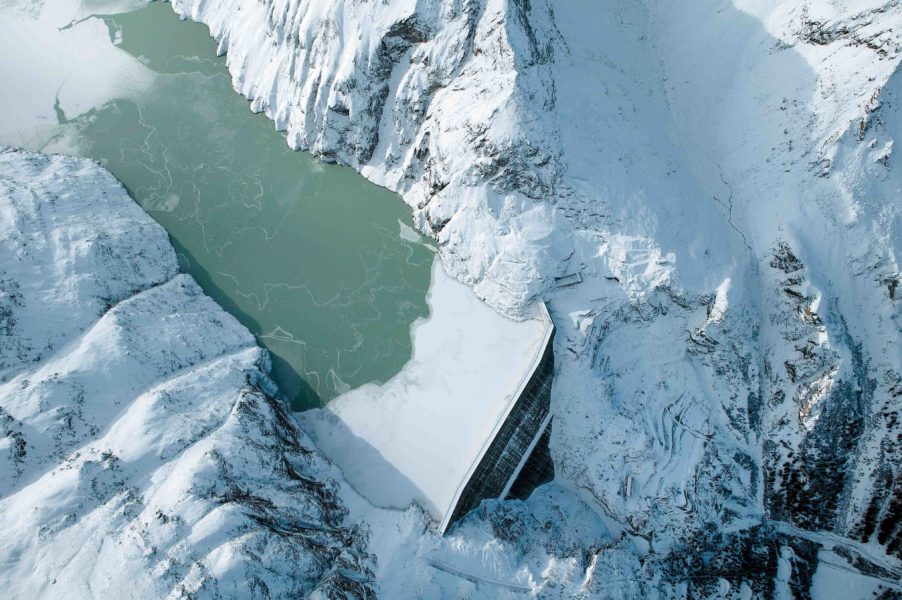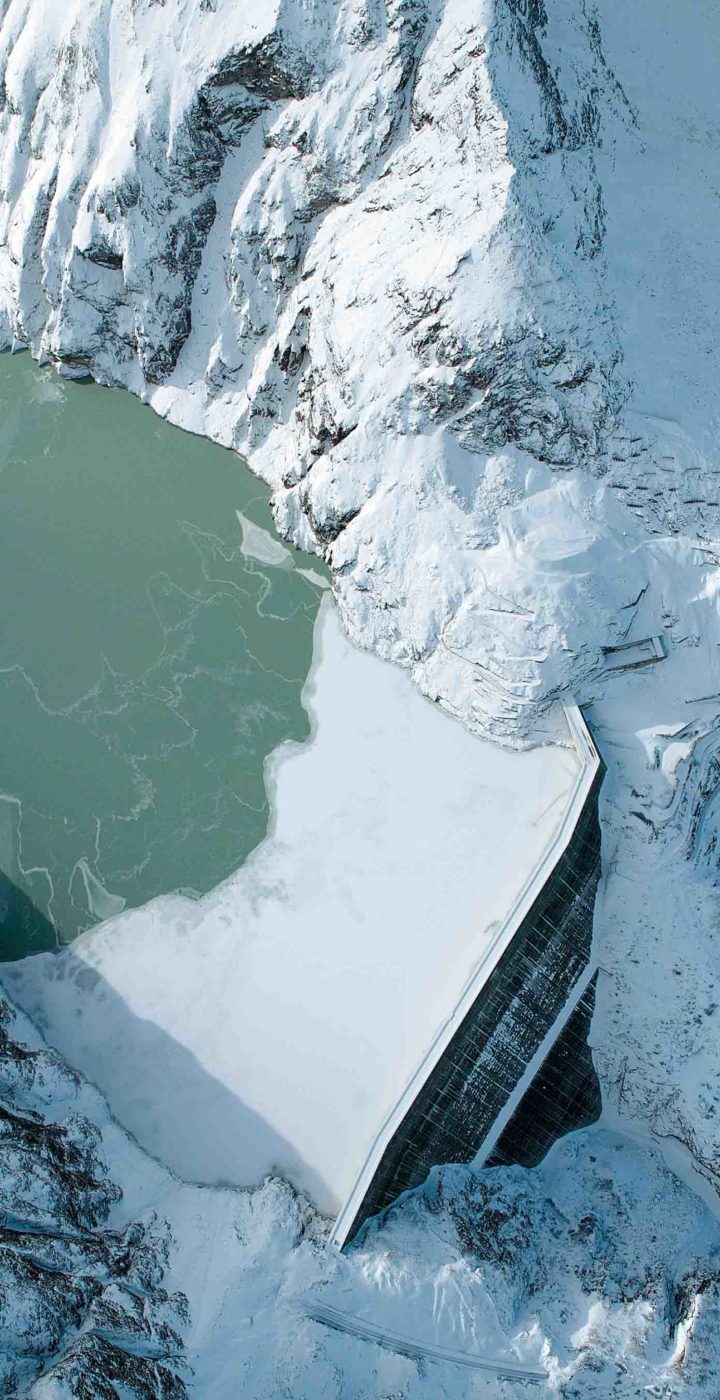NEW CHALLENGES
The glaciers are melting and the water systems of the high mountains are changing with them – including in the Monte Rosa region. Current forecasts predict that the Gorner Glacier will disappear completely from the lower flat area between 2045 and 2060. The retreat of the glacier reveals an area in which a natural lake about 3.5 kilometres long will form over the next few decades. The landscape changes naturally independently of the Gornerli project as moraines, boulders, rocks and a large lake instead of glaciers will shape the region in future.
Within this changed landscape, the Gornerli project is using the retreating glacier to build a dam around 85 metres high and create a water reservoir of around 150,000,000 m3.
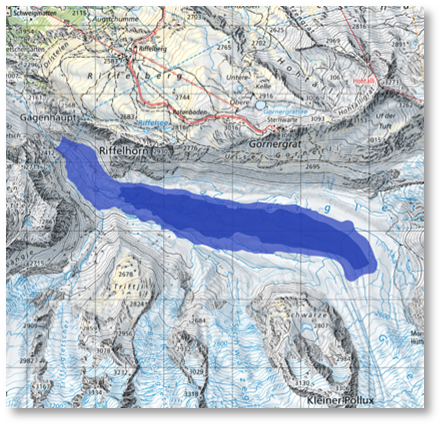
Future natural (dark surface) and artificial (dark and light surface) lake after the glacier has completely retreated (between 2045 and 2060)
In the coming years, the inflows into the Gornerli lake will increase as the glaciers melt, before gradually decreasing again and then stabilising. The useful volume of the reservoir will gradually increase after commissioning and can be fully utilised once the glacier has retreated completely. ETH Zurich and other external experts are currently helping to model the development of future tributaries, the topology of the exposed terrain and the retreating glacier. Additional test boreholes in the summer of 2025 are expected to provide further important insights. These results will be used to draw up the definitive dimensions of the planned dam as part of the construction project planning.
PROTECTED AREA AND BALANCING OF INTERESTS
The planned water reservoir will be built in a topographically favourable location that is in a natural valley narrowing with a large water catchment area and low visibility. The project comprises an arch dam approximately 85 metres high and approximately 245 metres long, as well as an underground pumping station. The Gornerli reservoir is a pure water reservoir that is integrated into the Grande Dixence power plant infrastructure. This means that there is no need to build new paths, roads or high tension lines.
The location of the dam and the future water reservoir is in the Dent Blanche-Matterhorn-Monte Rosa ILNM (Swiss Federal Inventory of Landscapes and Natural Monuments of National Importance) area. The environment and the landscape must be protected in the best possible way, and applicable legislation will form the legal basis for this. Impacts that cannot be prevented must be compensated for by suitable substitute and compensation measures. In order to achieve the best possible protection and targeted compensation measures, we are working closely with the relevant authorities, external experts and various stakeholders as part of the ongoing environmental impact assessment. The aim is to work together to find solutions that strike a balance between protection and utilization of water power.
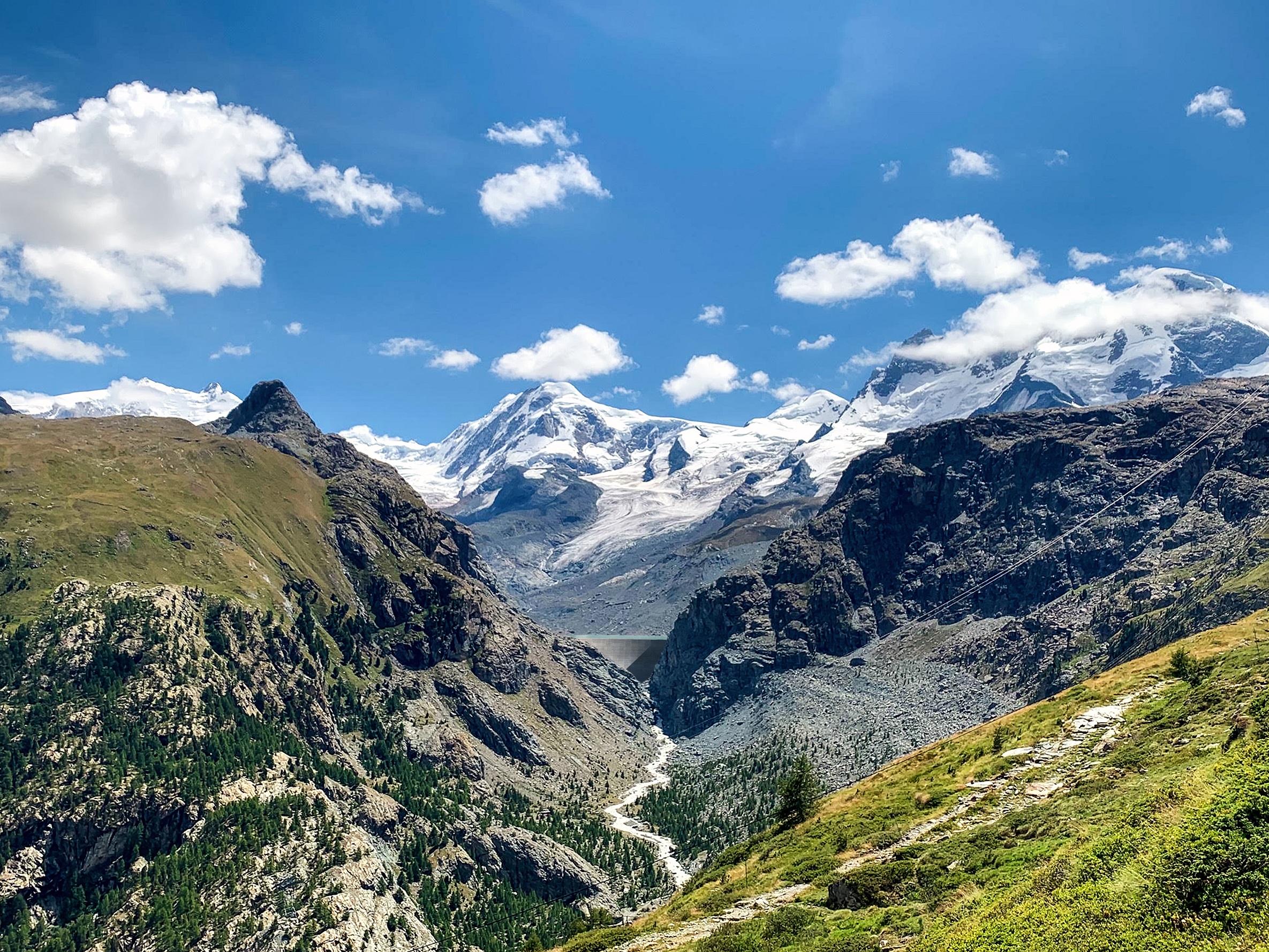
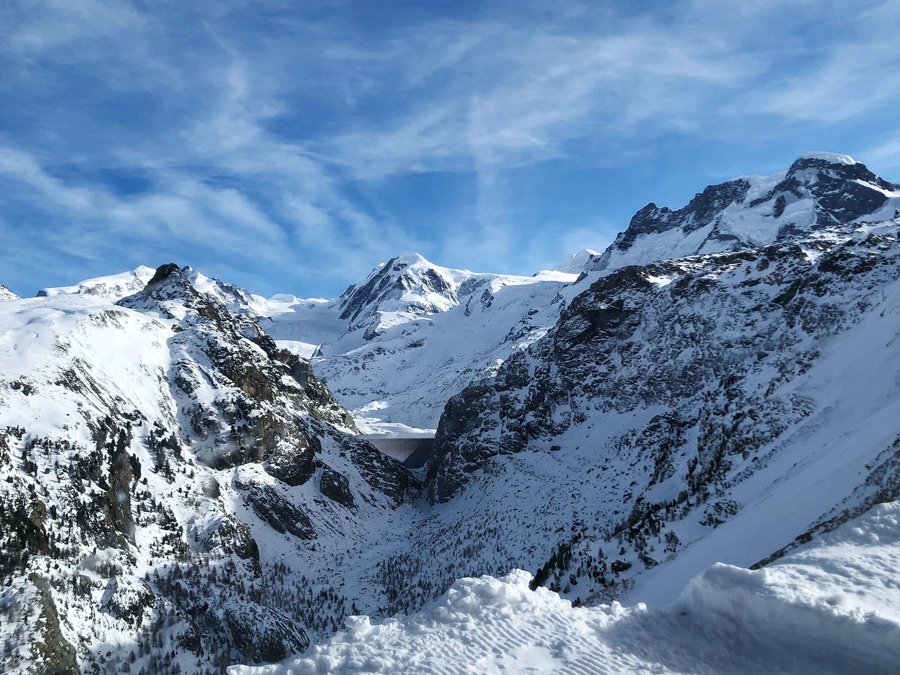
Visualisation of the arch dam in summer and winter (valley side).
SUBSTITUTE AND COMPENSATION MEASURES
In addition to the project-specific measures, alternative measures are required in accordance with current legislation to compensate for the structural impacts. Additional compensation measures are also required for the Hydropower Round Table projects. Both the substitute and compensation measures will be determined by the constructor in close cooperation with the environmental support group. The process of defining and implementing the additional compensation measures is the subject of political discussion.
The implementation of all compensation measures within the commune of Zermatt is not realistic. This means that solutions are required at cantonal or federal level. There is also a risk that defining, approving and implementing these compensation measures will take a lot of time and cause unnecessary delays to the main project.
IMPACT ON TOURISM
The melting of the Gorner Glacier and the associated formation of a natural lake will change the landscape throughout the Monte Rosa area. The Gornerli project envisages a wider and higher lake as well as a dam. The Monte Rosa region is used for glacier trekking, ski touring and heli-skiing, among other things. The natural lake being created by climate change and the construction of the dam will have the following impact on the downhill run towards Zermatt: skiers have to cross the gorge near the dam. The constructor and representatives of the mountain guides, the SAC (Swiss Alpine Club) Monte Rosa hut and the commune of Zermatt have been in close contact since early 2024 as part of the environmental support group and an additional working group in order to make the downhill run towards Zermatt as simple as possible. They are currently discussing the possibility of a tunnel that is about 1.5 km long.

